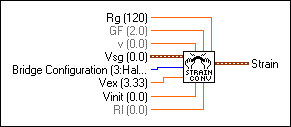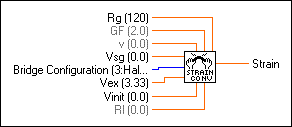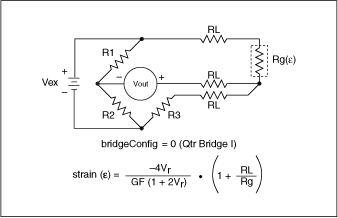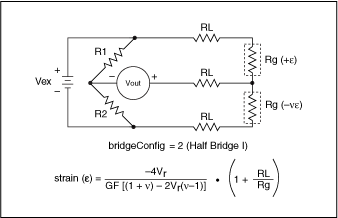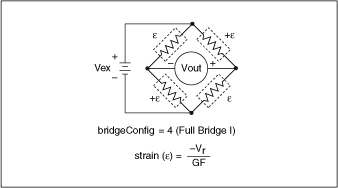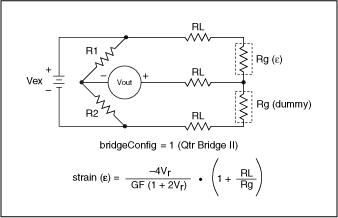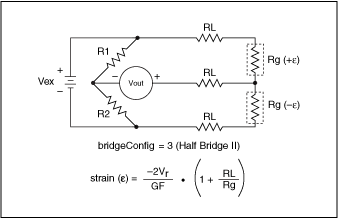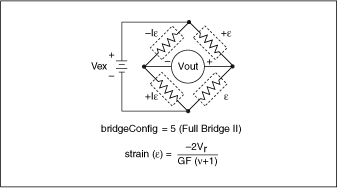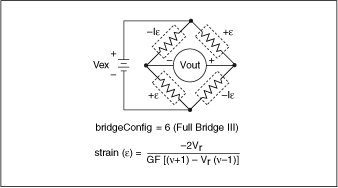Convert Strain Gauge Reading VI
Owning Palette: Scaling VIs
Requires: Base Development System
Converts a voltage read from a strain gauge to units of strain. Wire data to the Vsg input to determine the polymorphic instance to use or manually select the instance.
Use the pull-down menu to select an instance of this VI.
 Add to the block diagram Add to the block diagram |
 Find on the palette Find on the palette |
